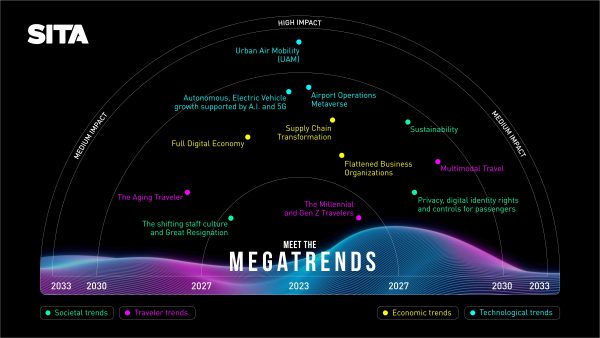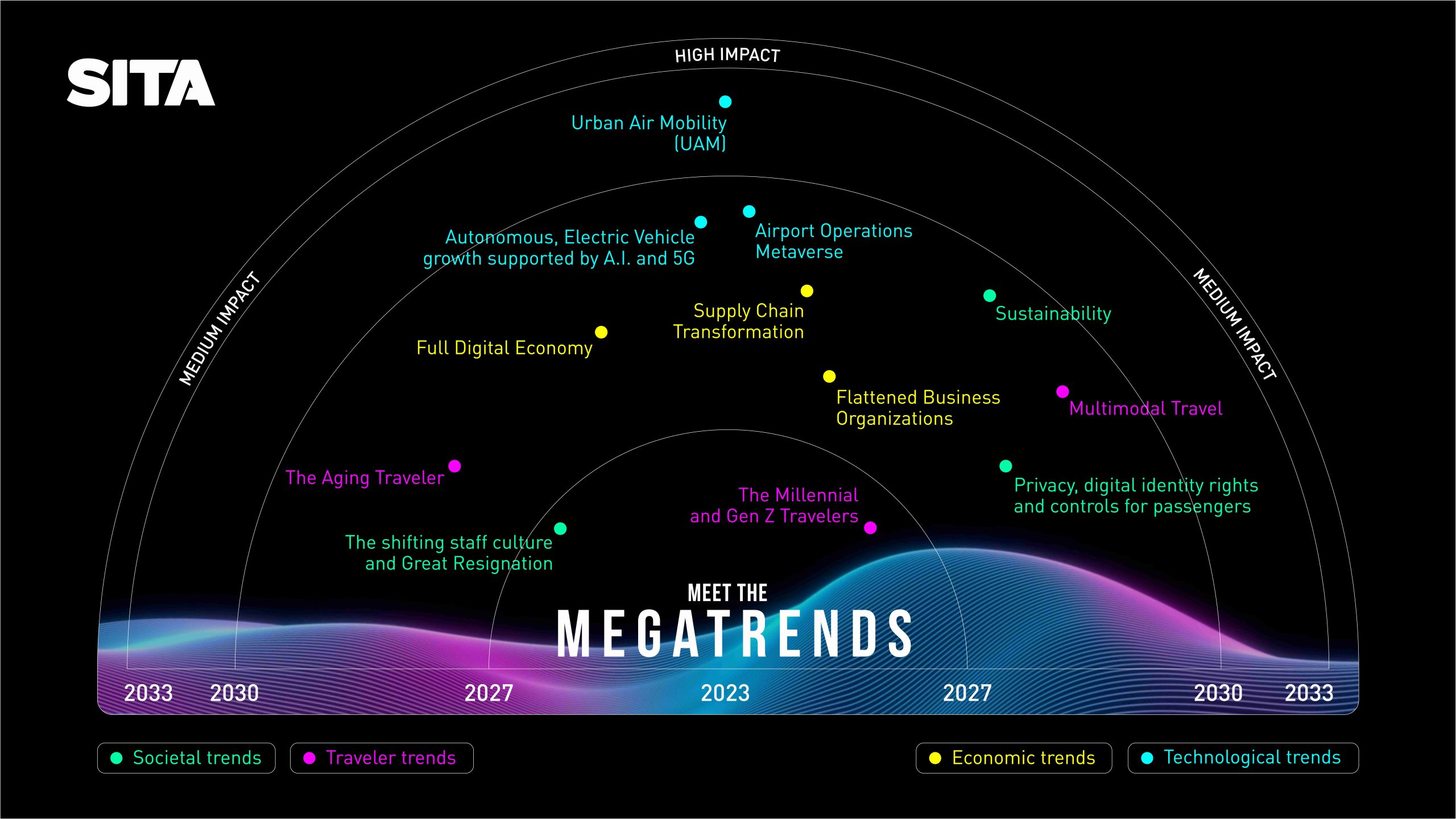SINGAPORE, 15 December 2022: Several powerful megatrends – from young, highly connected travellers to the arrival of electric air taxis – will exert an immense influence on air travel over the next decade, forcing industry, governments, and technology to adapt rapidly.
They were some of the findings highlighted in “Meet the Megatrends”, a new report from SITA that examines 12 emerging technological, societal, traveller, and economic trends that will significantly morph the travel landscape by 2033.

The megatrends do not exist in silos but operate in an evolving ecosystem where emerging technologies interconnect the trends and help drive them forward. Data is at the heart of this ecosystem. The increasing willingness of providers to share data across the wider travel industry will help further accelerate these trends and pave the way to the more connected, seamless travel experience that passengers want.
SITA VP Strategy and Innovation Ilkka Kivelä said: “The air transport industry is at a post-pandemic crossroads, facing challenges from all sides. While the travel recovery accelerates globally, airports and airlines are scrambling to provide the seamless travel experience passengers expect, often with slashed workforces and squeezed budgets. The climate crisis demands swifter and more decisive industry action to make travel more sustainable. We now have an opportunity to reimagine the world of travel, connect the dots and transform travel with bold solutions that cross sectors and exploit the latest technologies.”
One of the key trends identified in the report is Gen Z and millennial travellers driving a digital transformation of the transport industry, demanding a more integrated digital journey, and accelerating the digital way of life. Privacy, digital identity rights, and controls for passengers will be a priority for passengers opening the door to a future where we can travel from everywhere to anywhere without needing physical documents or being stopped for identification.
Another power trend is the automation and emergence of smart airports, which will reshape the workforce, give rise to a new flattened business organisation, and streamline operations through technology. By 2030 metaverse operations will be commonplace at leading airports and play a vital role in optimising processes, avoiding disruption, and facilitating intuitive, immersive control of intelligent airports.
Meanwhile, electric air vehicles are expected to be ubiquitous at major international airports by the end of the decade, operating as an effective auxiliary service and revenue stream for airports and airlines. This year alone, investment in the Urban Air Mobility industry has skyrocketed, with USD4.7 billion committed to developing eVTOL vehicles.
Kivelä said: “These trends are shaping SITA’s innovation agenda. We’re excited to work across many of these areas and look forward to collaborating with partners to drive positive change across the industry.”
The report was spearheaded by the SITA Lab innovation team and draws upon insights from across the transport industry, SITA’s global research, and the latest cutting-edge proof of concepts to identify the most powerful shifts that will drive the travel industry’s evolution by 2033.
To read the full report, head to https://www.sita.aero/innovation/meet-the-megatrends/







